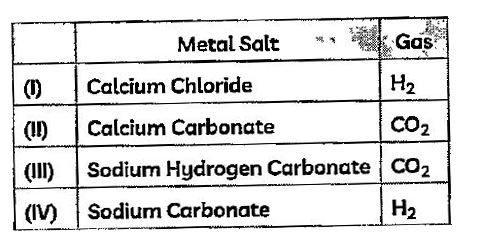From the given table showing convergent evolution between placental mammals and Australian marsupials, which is incorrectly matched?
To determine which pair is incorrectly matched in the context of convergent evolution between placental mammals and Australian marsupials, we can analyze the given pairs step by step.
1. Understanding Convergent Evolution:
- Convergent evolution occurs when different species evolve similar traits independently, often because they adapt to similar environments or ecological niches.
2. Analyzing the Given Pairs:
- We have a list of animals categorized into placental mammals and Australian marsupials. We need to identify which pair does not represent convergent evolution.
3. Reviewing Each Match:
- Lemur (Placental Mammal): This is correctly matched as lemurs are indeed placental mammals.
- Spotted Cuscus (Australian Marsupial): This is also correctly matched.
- Bobcat (Placental Mammal): Correctly matched as bobcats are placental mammals.
- Tasmanian Tiger (Australian Marsupial): Correctly matched as Tasmanian tigers are marsupials.
- Anteater (Placental Mammal): Correctly matched as anteaters are placental mammals.
- Ambat (Australian Marsupial): This is correctly matched.
- Koala (Australian Mammal): This is incorrectly matched as koalas are not classified as marsupials in this context; they are Australian mammals.
- Flying Squirrel (Placental Mammal): This is correctly matched.
4. Identifying the Incorrect Match:
- The incorrect match is between Koala (Australian Mammal) and Flying Squirrel (Placental Mammal). Koalas are not marsupials in the context of this question.
5. Conclusion:
- The answer to the question is that the incorrectly matched pair is Koala and Flying Squirrel.
Final Answer:
The incorrectly matched pair is Koala (Australian Mammal) and Flying Squirrel (Placental Mammal).
---
- Convergent evolution occurs when different species evolve similar traits independently, often because they adapt to similar environments or ecological niches.
- We have a list of animals categorized into placental mammals and Australian marsupials. We need to identify which pair does not represent convergent evolution.
- Lemur (Placental Mammal): This is correctly matched as lemurs are indeed placental mammals.
- Spotted Cuscus (Australian Marsupial): This is also correctly matched.
- Bobcat (Placental Mammal): Correctly matched as bobcats are placental mammals.
- Tasmanian Tiger (Australian Marsupial): Correctly matched as Tasmanian tigers are marsupials.
- Anteater (Placental Mammal): Correctly matched as anteaters are placental mammals.
- Ambat (Australian Marsupial): This is correctly matched.
- Koala (Australian Mammal): This is incorrectly matched as koalas are not classified as marsupials in this context; they are Australian mammals.
- Flying Squirrel (Placental Mammal): This is correctly matched.
- The incorrect match is between Koala (Australian Mammal) and Flying Squirrel (Placental Mammal). Koalas are not marsupials in the context of this question.
- The answer to the question is that the incorrectly matched pair is Koala and Flying Squirrel.
The incorrectly matched pair is Koala (Australian Mammal) and Flying Squirrel (Placental Mammal).
Similar Questions
Knowledge Check
Which of the following set shows convergent evolution?
AAnteater and NumbatBLemur and BobcatCSpotted Cuscus and WolfDMole and flying PhalangerWhich option shows incorrectly matched group
APseudopodiospore - Plasmodium - SporulationBGermmules - Spongilla - BuddingCZoospores - Aspergillus - SporulationDConidia - Penicillium - Asexual reproductionThe placental mammal which is similar to Australian marsupial spotted cuscus is
ALemurBBobcatCNumbatDWolf
Which of the following is a placental mammal not marsupial?
View SolutionA: Placental wolf and Tasmanian wolf (a marsupial) show convergent evolution.
R: Like marsupials placental mammals in other parts of world also exhibit adaptive radiation in evolving into varieties of such placental mammals each of which appears to be similar to a corresponding marsupial.
View SolutionThe given table shows differences between spermato-genesis and spermiogenesis. Select the incorrect option.
View SolutionObserve the reaction between metal salt and dilute HCl and select the correct combination from the table given:


View SolutionExpress the relation between a and b with b as the subject.

View Solution

